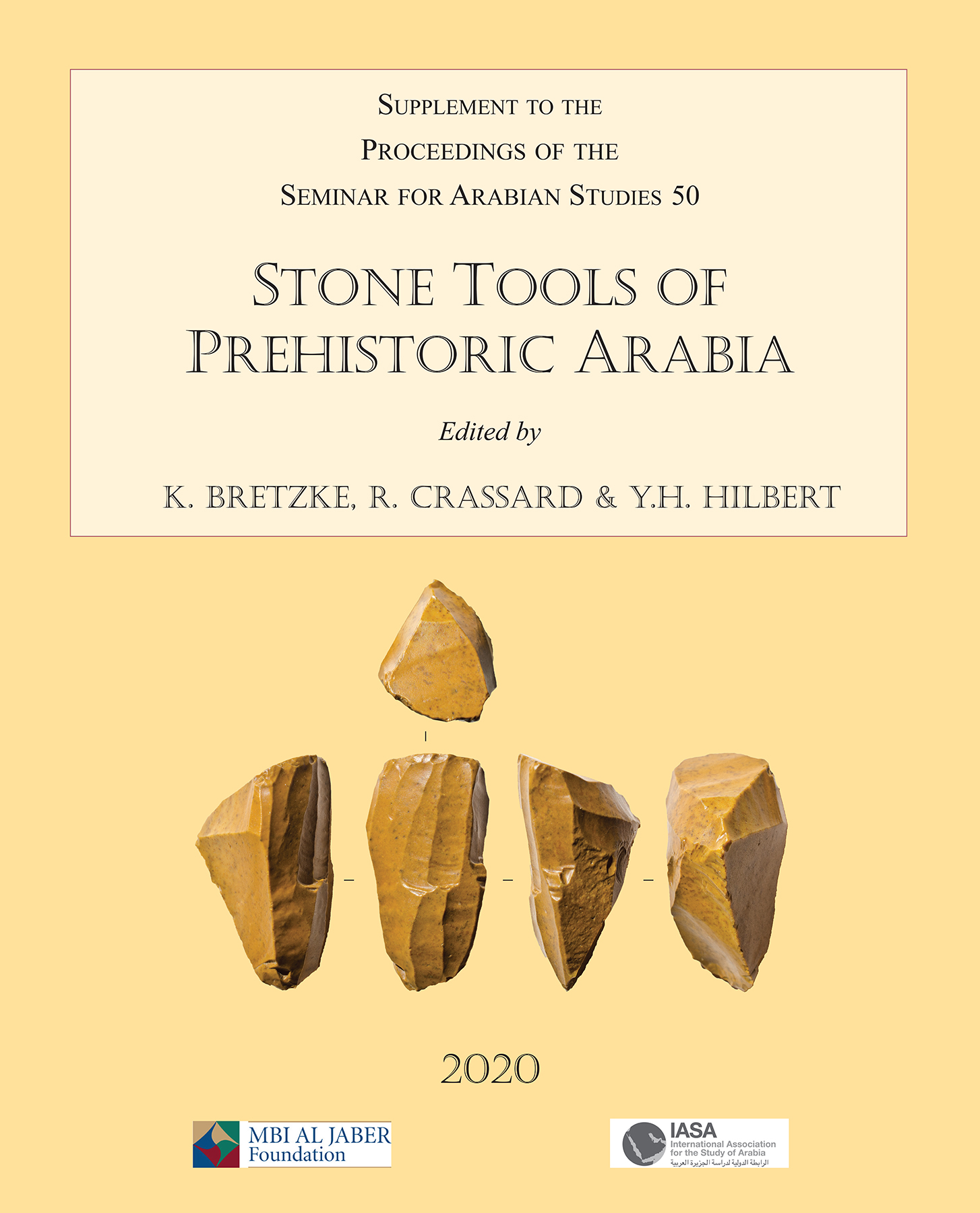The lithic industry from the Iron Age coastal settlement HAS1 (Inqitat), southern Oman
Keywords:
pre-Islamic Arabia, Dhofar, Iron Age, lithics, geometric microlithsAbstract
The excavation of the settlement at Inqitat (HAS1), conducted in 2016 by the Italian Mission to Oman (IMTO) in collaboration with the Office of the Adviser to H.M. the Sultan for Cultural Affairs, produced a large quantity of lithic artefacts. The material culture and the radiocarbon dating suggest that the site was settled from the Iron Age (eighth–seventh century BC) to the classical period (first–second century AD). Little is known about how inhabitants made use of the lithic resources available in the region during this period. Raw material ratios are used to reconstruct lithic resource provenance while technological analysis aims to reconstruct the production systems employed by local flintknappers to manufacture a wide array of lithic instruments. The raw materials used for tool production at Inqitat come from both local and long-distance resources: high-quality chert from the Dhofar Mountains was exploited locally while obsidian was imported from western Yemen. Core reduction strategies follow a highly flexible and opportunistic exploitation of surface volume. While blades and bladelets are rare small flakes are highly abundant and make up most of the lithic samples. Drills, scrapers, retouched blanks, and geometric microliths provide a glimpse into how Dhofar Iron Age populations made use of stone tools and what activities they engaged in.
References
Albright F.P. 1982. The American archaeological expedition in Dhofar, Oman, 1952–1953. Washington, DC: American Foundation for the Study of Man.
Avanzini A. 2002. Khor Rori Report 1. (Arabia Antica). Pisa: Edizioni Plus.
Avanzini A. 2008. Khor Rori Report 2: A port in Arabia between Rome and the Indian Ocean (3rd C. BC–5th C. AD). (Arabia Antica). Rome: ‘L’Erma’ di Bretschneider.
Bonacossi D.M. 2002. Excavations at Khor Rori: The 1997 and 1998 campaigns. Pages 29–52 in A. Avanzini (ed.), Khor Rori Report 1. Pisa: Edizioni Plus.
Crassard R. 2008. La préhistoire du Yémen: Diffusions et diversités locales, à travers l’étude d’industries lithiques du Hadramawt. (British Archaeological Reports, International series). Oxford: Archaeopress.
Cremaschi M. & Negrino F. 2002. The frankincense road of Sumhuram: Palaeoenvironmental and prehistorical background. Pages 325–363 in A. Avanzini (ed.), Khor Rori Report 1. Pisa: Edizioni Plus.
Cremaschi M. & Perego A. 2008. Patterns of land use and settlements in the surroundings of Sumhuram. An intensive geo-archaeological survey at Khor Rori: Report of field season February 2006. Pages 563–607 in A. Avanzini (ed.), Khore Rori 2: A port in Arabia between Rome and the Indian Ocean (3rd C. BC–5th C. AD). Rome: ‘L’Erma’ di Bretschneider.
Hilbert Y.H. 2014. Khashabian: A Late Paleolithic industry from Dhofar, Southern Oman. (British Archaeological Reports, International Series 2601). Oxford: Archaeopress.
Hilbert Y.H. & Azzarà V.M. 2012. Lithic technology and spatial distribution of artefacts at the Early Bronze Age site HD-6 (Sharqiyya Region, Sultanate of Oman). Arabian Archaeology and Epigraphy 23: 7–25.
Inizan M-L., Roche H. & Tixier J. 1992. Technology of knapped stone. Meudon: Ex Libris.
Khalidi L. 2005. The prehistoric and early historic settlement patterns on the Tihamah coastal plain (Yemen): Preliminary findings of the Tihamah Coastal Survey 2003. Proceedings of the Seminar for Arabian Studies 35: 115–127.
Lischi S. 2019. Dal Paleolitico al periodo islamico: La storia del Dhofar attraverso lo studio archeologico dell’Inqitat. Pages 149–151 in M. Cattani, & D. Frenez (eds), 40 Anni Di Ricerche Archeologiche Italiane in Oman. Rome: BraDypUS Communicating Cultural Heritage.
Monigal K. 2002. The Levantine Leptolithic: Blade production from the Lower Paleolithic to the dawn of the Upper Paleolithic. Dallas, TX: Southern Methodist University.
Platel J.P. & Roger J. 1989. Evolution géodynamique du Dhofar (Sultanat d’Oman) pendant le Cretace et le Tertiaire en relation avec l’ouverture du golfe d’Aden. Bulletin de la Société Géologique de France 5: 253–263.
Platel J‐P., Roger J., Peters T.J., Mercolli I., Kramers J.D. & Le Métour J. 1992. Geological map of Salalah, Sultanate of Oman. Muscat: Oman Ministry of Petroleum and Minerals.
Rosen S.A. 1997. Lithics after the Stone Age: A handbook of stone tools from the Levant. Walnut Creek, CA: Altamira Press.
Rougeulle A. 2008. A medieval trade entrepot at Khor Rori? The study of the Islamic ceramics from Hamr Al-Sharqiya. Pages 645–667 in A. Avanzini (ed.), Khor Rori Report 2: A port in Arabia between Rome and the Indian Ocean (3rd C. BC–5th C. AD). Rome: ‘L’Erma’ di Bretschneider.
Uerpmann M. 1992. Structuring the late Stone Age of southeastern Arabia. Arabian Archaeology and Epigraphy 3: 65–109.
Zarins J. 2001. The Land of incense: Archaeological work in the Governorate of Dhofar, Sultanate of Oman. Muscat: Sultan Qaboos University.
Published
How to Cite
Issue
Section
License
Archaeopress Publishing, Oxford, UK


